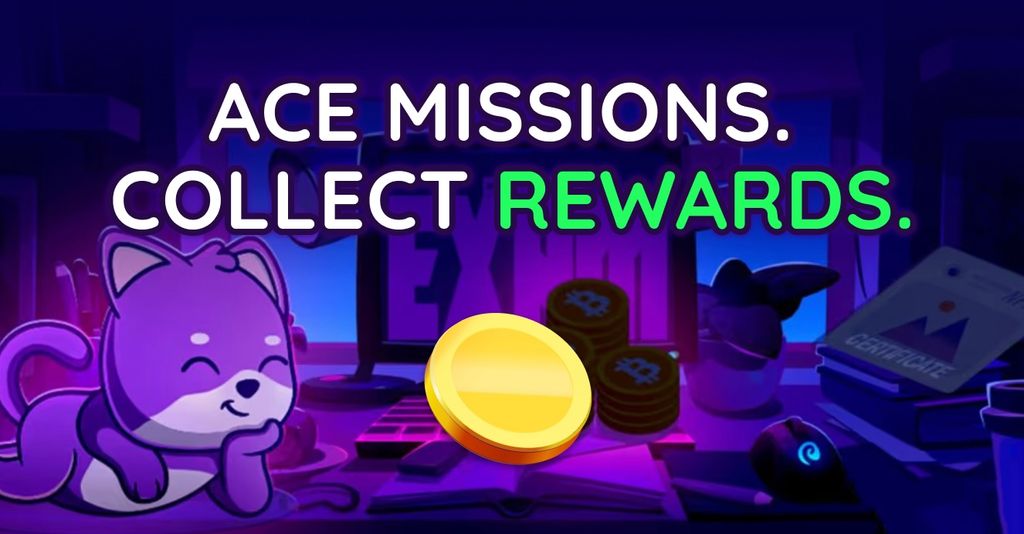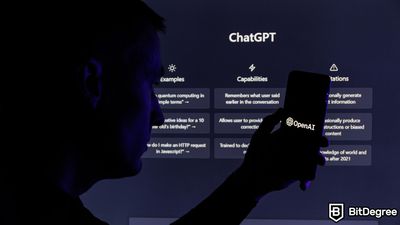Key Takeaways
- ChatGPT, designed by OpenAI, has taken the world by storm. You can use it to generate texts, answer questions, and even code. It learns from each interaction, getting smarter over time.
- ChatGPT is not just for fun. It's a valuable tool in educational and professional settings. You can use it to enhance your learning and improve your work efficiency.
- The development of future models like GPT-5 shows the potential for even more advanced AI. However, you need to be aware of privacy and ethical issues that come with AI.
Stop overpaying - start transferring money with Ogvio. Sign up, invite friends & grab Rewards now! 🎁
The world has seen remarkable growth in AI over the past few years. It all went from simple applications to complex systems capable of understanding and generating content like a human. Today's star and the one everybody needs to learn how to use ChatGPT; a tool designed by OpenAI, that has changed how we interact with AI today.
ChatGPT is part of a new wave of AI models known as large language models (LLMs). These models are trained on human language datasets, allowing them to generate text that is often indistinguishable from that written by humans. ChatGPT can answer questions, write essays, create poetry, and even generate code.
The development of AI, including ChatGPT, is driven by advancements in computing power, data availability, and algorithmic innovations. The final goal is to create machines that can understand, learn, and respond in ways that were once thought to be exclusively for humans. However, this has not only expanded our capabilities but also raised important questions about ethics, privacy, and the future role of AI in society.
If you're fascinated by the potential of ChatGPT, Writesonic or Synthesia can be your next step toward adopting AI-driven content creation. Whether you're managing a tech blog, running a startup, or starting a YouTube channel, these two equip you with the tools to excel.
Whether you want it or not, AI is the future and it is better to be prepared before it comes. I found Udemy, Datacamp, and Udacity to have the best available courses on this topic. With that in mind, let's learn how to use ChatGPT and how it works.
Table of Contents
- 1. What is ChatGPT?
- 2. How to Use ChatGPT: A Starter Guide
- 3. ChatGPT Versions and Advanced AI Features
- 4. How To Get ChatGPT API in Applications
- 5. Top 4 ChatGPT Use Cases
- 5.1. Creative Writing and Content Generation
- 5.2. Code Generation, Debugging, and Learning Programming
- 5.3. ChatGPT for Learning and Educational Content Creation
- 5.4. Automating Customer Service and Reducing Workload
- 6. How To Improve Your ChatGPT Experience
- 6.1. Best Strategies for Formulating Finer Prompts
- 6.2. User Communities, Forums, and Learning from Experience
- 7. ChatGPT's Limitations and Future Directions
- 7.1. Accuracy Struggles, Content Generation Limits, and Tokens
- 7.2. Ethical Usage, Privacy, and Security
- 8. Innovative Uses of ChatGPT and Future Prospects
- 8.1. The Latest Updates on GPT. Peek into GPT-5?
- 9. Conclusions
What is ChatGPT?
To learn how to use ChatGPT you first need to learn what is ChatGPT. Developed by OpenAI, ChatGPT is a tool that uses something called neural networks along with machine learning (ML) to understand and generate language. Let's unwrap it bit by bit, shall we?
Latest Writesonic Coupon Found:If you ever wondered "How does ChatGPT work?", think of neural networks as webs of digital neurons, not too different from those in our brains. These digital versions learn patterns from given text and visual data. Now, mix in some machine learning magic - where the computer learns from the data it's fed and improves its responses over time - and you've got the engine that powers ChatGPT.
It's mind-blowing how quickly ChatGPT gained popularity. Within two months of its release, it hit an impressive milestone, amassing 100 million users. At the time of writing this article, over 180 million accounts were actively using ChatGPT daily. This rapid adoption rate speaks a lot about ChatGPT's utility and fascination among the population.
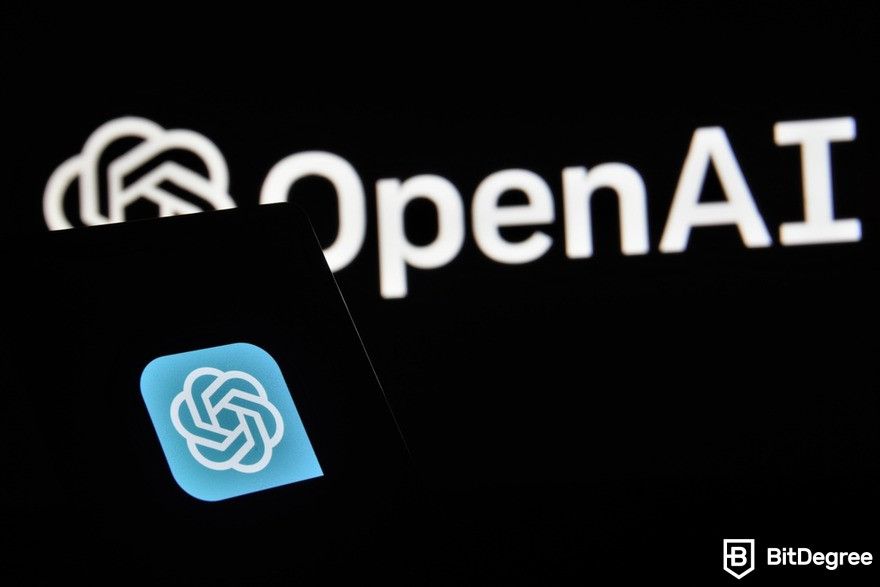
ChatGPT's training involved feeding it the content of books, websites, code, and all sorts of written material. This training allowed it to generate responses that could be informative or even mimic a specific writing style. Let's say you ask it to write a poem in the style of your favorite poet, and it does just that!
What sets ChatGPT apart is not just its ability to understand and generate text but also its continuous learning. Every interaction helps it get better, thanks to learning from human feedback. It's like teaching a super-smart student who never forgets a lesson and continually improves. Sounds impossible, right?
Yet, with all its brilliance, ChatGPT keeps its cyber feet on the ground. It admits when it doesn't know something and avoids providing harmful information. Do you want to try it out? Follow me and learn how to access ChatGPT in a step-by-step guide.
How to Use ChatGPT: A Starter Guide
Whether you're at your desktop or using your phone on the go, it is very easy to start learning how to use ChatGPT. Here's a simple guide to get you up and running:
Step 1: Head over to the OpenAI website. Do you prefer your phone? Just download the ChatGPT app from the Apple Store or Google Play Store.

Step 2: Click the sign-up button. You'll need to provide some basic information, like your email address. Once you hit "Continue," you're almost there.

Step 3: Check your email for a verification link from OpenAI. Clicking this link confirms your email address, and voila, you're in.
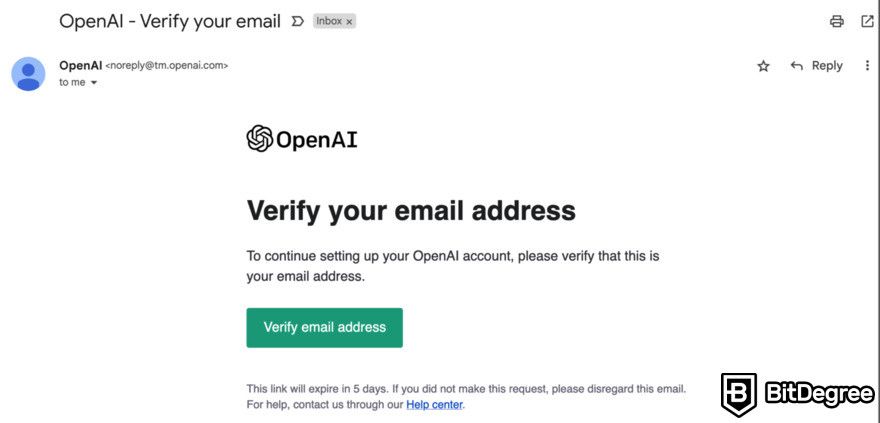
Step 4: Once you're logged in, you'll see a prompt to start chatting. Type in anything you're curious about, and ChatGPT will respond.
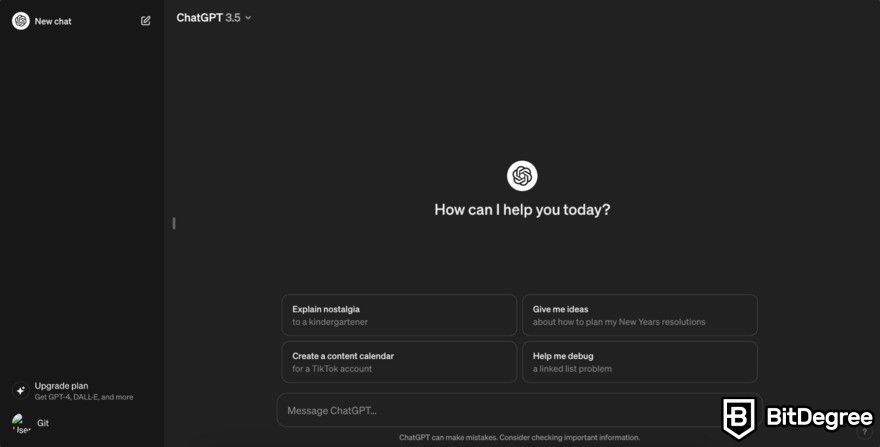
Note: You can also upgrade your plan to the pro version. The pro plan offers the GPT-4 model, DALL-E for image generation, and more. A subscription costs $20 per month.
Encounter issues while trying to figure out how to access ChatGPT? Here are some tips to make your start a little easier:
- Possible sign-up issues: Occasionally, ChatGPT might have a few bumps. A common hiccup is the verification email taking its sweet time. Patience is key; it usually shows up. If the email is nowhere to be seen, peek into your spam or promotions folders. It might be hiding there. In case you encounter website or app errors, a quick refresh or restart often does the trick.
- User interface insights: The ChatGPT interface is clean and user-friendly. Your chats appear in order, making it easy to follow the conversation. Look around, and you'll notice options to start a new chat or review old ones. It's all designed to make your experience smooth and enjoyable.
- Personalization settings: Since you know how to access ChatGPT, I am sure you want to improve your experience. Check out the settings. You can adjust notifications, manage privacy options, and even customize how ChatGPT interacts with you. Personalizing your chat makes the conversation unique.
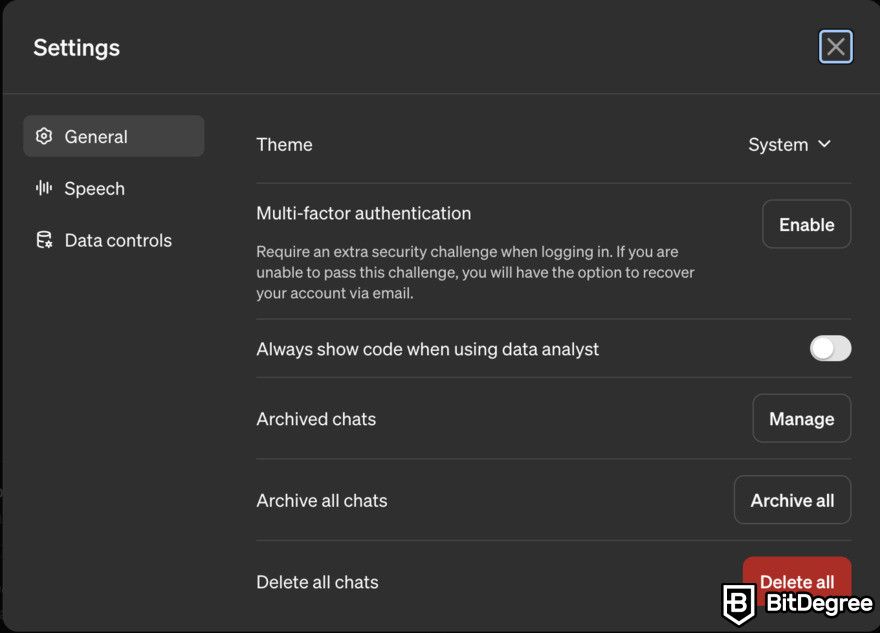
There you have it - a simple guide on how to get ChatGPT. Go ahead and ask anything, it's ready to chat whenever you are.
ChatGPT Versions and Advanced AI Features
You know what is ChatGPT by now. But how does ChatGPT work? The generative pre-trained transformer models, or GPTs, are a core of the ChatGPT engine. From GPT-1 to GPT-4, each model has its own set of skills, sort of like characters in a video game leveling up with each new version.
While everything started with GPT-1, GPT-2 was the one that put OpenAI on the map. With 1.5 billion parameters (the bits of data it learns from), it was a huge step forward in AI technology. People used it for everything from writing stories to generating code snippets. Its ability to create detailed text based on minimal input was, frankly, mind-blowing at the time.
Then came GPT-3, with a staggering 175 billion parameters. This version wasn't just a step up; it was a giant leap. Suddenly, you could have conversations with AI that felt very human. GPT-3 could write essays, solve puzzles, and even create basic apps from descriptions. Its versatility made it a favorite among developers, creatives, and researchers alike.
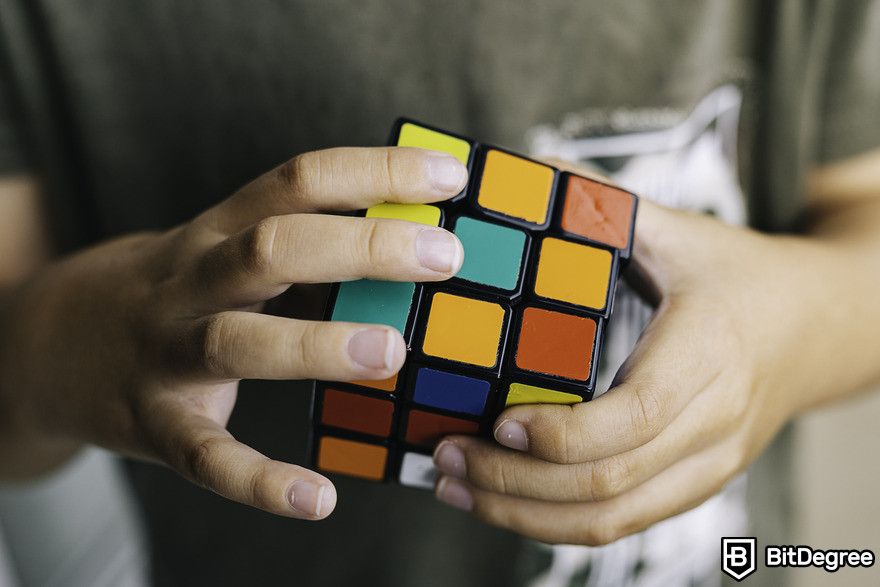
GPT-3.5, an interim update before the next big release, fine-tuned the abilities of GPT-3, making conversations even smoother and more intuitive. It served as a polished version of its predecessor, bridging the gap to the next big innovation.
GPT-4 trained on roughly 13 trillion tokens, pushed boundaries even further with its ability to understand and generate text. With GPT-4, the quality of output reached new heights. It could pass SAT reading and writing parts with a score of 710/800, design websites from photos, and much more. The newest model, GPT-4o, builds on the strengths of its predecessors with even more advanced capabilities. It offers improved accuracy, better context understanding, and increased creativity.
Each model's unique capabilities opened up new application scenarios. GPT-2 started the trend with creative writing and simple question-answering tasks. GPT-3 expanded to more complex tasks like programming help, tutoring, and even gaming. With GPT-4, the scope has widened to include professional-level tasks, educational tools, and detailed creative work.
The evolution from GPT-2 to GPT-4o is a story of how AI is becoming an integral part of our creative and professional lives, offering tools that inspire, assist, and sometimes even amaze us.
How To Get ChatGPT API in Applications
Determining how to use ChatGPT API for your apps breathes new life into them, making them smarter and more interactive. Let's break down how to do this, from setup to authentication, with some neat examples to spark your imagination.
Step 1: Sign up for OpenAI and get API access: First things off, you need an OpenAI account. Once you've got that, access to the API keys is next. These keys are secret handshakes between your app and ChatGPT, letting them communicate securely.

Step 2: Import the OpenAI library: If your project speaks Python, adding the OpenAI library is a breeze. Just a quick "pip install openai" in your terminal, and you're set. For other languages, you might need to interact with the API directly through HTTP requests. Check out the official guide here.

Step 3: Using your API key: With your API key in hand, authenticate your application. Keep this key safe; it's the password to a lot of power. Typically, you'll use it in your code (securely) to make API calls.
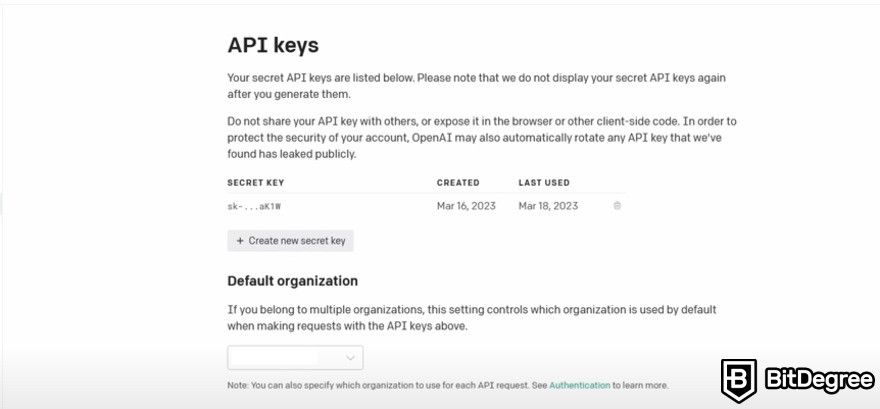
Step 4: Crafting your first request: How to use ChatGPT to do something cool? Whether you're asking for text generation or translation, it starts with a simple function call in your code, passing the prompt and any parameters like temperature (creativity level) and max tokens (length of the response).
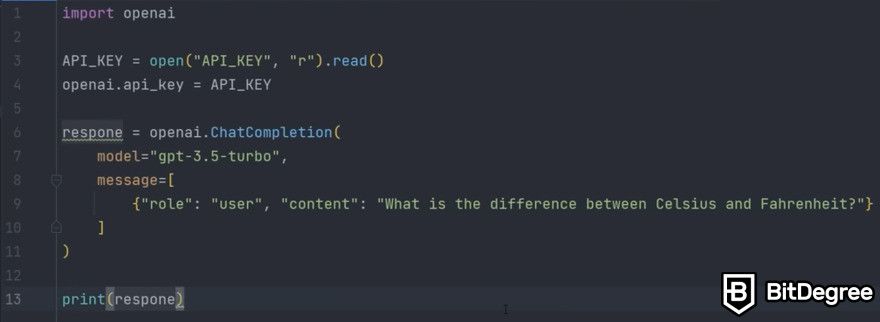
Hooray! You have integrated GPT into your project. Next, for more inspiration, let's review some examples of how the ChatGPT API is being used in real life:
- Content creation bots: Imagine you're building a blog platform. Integrating ChatGPT to help users come up with blog post ideas or even draft posts can be a game changer. A simple prompt like "Give me blog post ideas about AI advancements" can release a flood of inspiration.
- Customer support automation: ChatGPT can power up your customer support by providing instant, accurate responses to common queries. Set it up to understand questions about your product or service, and watch your customer satisfaction bloom.
- Language learning apps: With ChatGPT, your app can offer conversational practice, grammar corrections, or vocabulary suggestions in a foreign language. It's like having a tutor available 24/7.
Like Uncle Ben once said, with great power comes great responsibility. Secure your API keys and monitor usage to prevent unexpected bills. Also, consider how you use AI to ensure it benefits your users positively.
Top 4 ChatGPT Use Cases
ChatGPT aids writers in unlocking new ideas and overcoming writer's block while also providing programmers with coding insights and solutions. With a few more examples incoming, let's see how it manages to do it all at once and get some inspiration for future projects.
Creative Writing and Content Generation
ChatGPT has become a go-to for many when it comes to flexing creative muscles or cranking out content. Writers, from newbies to professionals, found it an invaluable tool for breaking through writer's block or generating ideas for their next big project.
Imagine sitting down to write with your screen blank and your mind buzzing with the day's distractions. Then, you turn to ChatGPT. You type in a prompt, perhaps something as simple as "Write a story about a lost city." Seconds later, you have a starting point - a spark that turns on your imagination.
ChatGPT draws information from a deep well of internet text. It's read more books, articles, and websites than any human could in multiple lifetimes. This reading list allows it to generate text across a wide spectrum of genres and styles. Need a sci-fi story set in a post-apocalyptic future? ChatGPT can do that. Or perhaps you're looking for a heartfelt letter to a friend? ChatGPT has you covered there too.

Content creators use ChatGPT for stories and scripts. Bloggers turn to it for article ideas or even complete drafts on topics ranging from technology to travel. Its ability to adjust tone and style means it can suit any audience, whether it's a formal report or a casual blog post.
One of the most fascinating aspects of ChatGPT is its potential for collaboration. Artists and writers prompt ChatGPT for plot twists, character dialogues, or descriptive passages, then refine and integrate these suggestions into their work. It's like having a ghostwriter who's always available, day or night.
Yet, for all its capabilities, ChatGPT isn't without its quirks. It might occasionally veer off course or offer a take that's more humorous than helpful. These moments, though, often add a touch of unpredictability and fun to the creative process. In the end, ChatGPT stands out as a source of inspiration. Its influence is growing, shaping how stories are told and content is created.
Code Generation, Debugging, and Learning Programming
After learning how to use ChatGPT many programmers found their new go-to partner, from experts to those just dipping their toes into the coding waters. Here's a closer look at how it's shaking things up.
Say you're working on a project and need a quick example of a Python function to sort a list of numbers. ChatGPT can generate that in seconds.
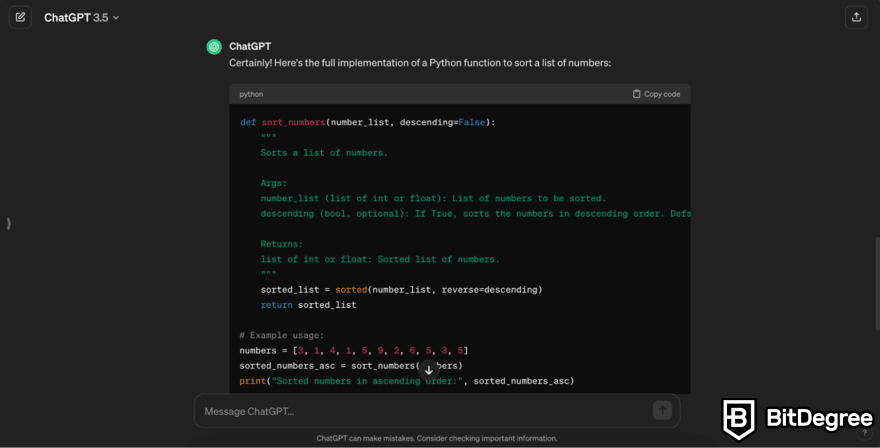
Result:

Most of the time, you would need a few iterations to get the code working; however, this time, it was a one-shot.
Debugging can often feel like looking for a needle in a haystack. Here's where ChatGPT comes in handy too. Feed it the error messages or describe the bug, and it will suggest potential fixes. It might point out if you're missing a semicolon or using a variable out of scope, saving hours of frustration and forehead-smacking.
ChatGPT is also a patient teacher. Interested in learning JavaScript but have a background in Ruby? ChatGPT can help translate concepts between languages with explanations and examples in a way that makes sense. It easily adapts to your pace and style of learning.
If you are interested in web programming and JavaScript, I would be happy to share one of the best online courses I found. As the description says, completing The Complete JavaScript Course 2024: From Zero to Expert! from Udemy can help you become an advanced, confident, and modern JavaScript developer.

There are stories of developers using ChatGPT to write entire sections of code for new projects. Others share how ChatGPT helped them understand complex algorithms by breaking them down into simpler steps. Some even credit ChatGPT with helping them pass coding interviews by practicing with it daily.
ChatGPT's influence extends beyond writing and debugging code. It's helping people think differently about problem-solving and algorithm design. By interacting with ChatGPT, programmers can refine their logic, learn to ask better questions, and even improve their documentation skills.
In the often intimidating world of programming, ChatGPT makes coding more accessible, understandable, and fun. Whether you're debugging late at night, learning a new programming language, or just needing someone to bounce ideas off, ChatGPT is becoming an integral tool in the programmer's toolkit.
ChatGPT for Learning and Educational Content Creation
ChatGPT has turned into a game-changer for education too. From complex math problems to history essays, ChatGPT lends a hand, making learning more accessible and engaging.
Teachers are getting creative with it. Imagine a history class where ChatGPT helps students experience dialogues between historical figures. It's not just about dates and events anymore; it's about bringing history to life and making it into a conversation. This approach converts learning from a passive into a more interactive experience. Sounds fun, right?
For students struggling with writing, ChatGPT can be a second pair of eyes with its suggestions for improvements. And for those learning new languages, ChatGPT acts as a patient language partner, ready to practice conversation anytime, correcting mistakes, and boosting confidence along the way.

Educational content creators are finding a valuable ally in ChatGPT as well. It helps to generate new ideas, outline articles, or even draft entire lessons. This can be a big time saver, allowing you to focus more on engaging with your audience and less on staring at a blank page.
Yet, with all its advantages, ChatGPT is far away from being a replacement for teachers. It offers information and help, but the guidance, wisdom, and personal touch of educators are irreplaceable. The goal is to blend ChatGPT's capabilities with traditional teaching methods, creating a hybrid model where technology supports humans.
Automating Customer Service and Reducing Workload
Businesses are finding new teammates in ChatGPT, especially when it comes to customer service. This AI tool is changing the way companies interact with their customers, making conversations smoother and responses quicker. Imagine a customer service agent who never sleeps, eats, or takes a break. That's ChatGPT for you.
Reducing workload? Absolutely. ChatGPT has this uncanny ability to take on a variety of tasks. From scheduling appointments to sending follow-up emails, it's got it covered. This not only speeds up operations but also ensures nothing falls through the cracks.
For starters, ChatGPT can handle a flood of customer queries without breaking a sweat. From answering FAQs to solving basic issues, an extra set of hands on deck. This means human agents can focus on more complex cases while ChatGPT takes care of the routine stuff. It's a win-win; customers get instant responses, and humans aren't overwhelmed.

Then there's the task of gathering information. ChatGPT can ask the right questions and collect details from customers. This information is gold for businesses looking to understand their audience better. Like a detective on the team - one that's good at piecing together little clues.
And let's not forget the cool factor. ChatGPT can turn a standard customer service interaction into something memorable. It can crack jokes, offer personalized recommendations, or simply ensure the conversation flows naturally. This adds a bit of warmth and personality to digital interactions, making customers feel more connected to the brand.
In the grand scheme of things, integrating ChatGPT into business operations isn't just about keeping up with technology. It's about enhancing the customer experience, streamlining workflows, and, ultimately, building stronger relationships.
How To Improve Your ChatGPT Experience
Mastering how to use ChatGPT is simpler than you think. Imagine having a toolkit that transforms every interaction with GPT into a seamless exchange of information, just for you.
This chapter is that toolkit!
The art of formulating prompts, and engaging in online communities will get you exactly what you need from ChatGPT, making every conversation more productive.
Best Strategies for Formulating Finer Prompts
Getting the best out of ChatGPT often comes down to how you ask. Think of it as talking to a very literal genie; the clarity of your request can make a world of difference. Here are some tips to shape those wishes into prompts that ChatGPT can work with.
- Be clear and direct: Start with clarity. If you're looking for an answer to a question, make it straightforward. Instead of saying, "I'm wondering about ChatGPT," just ask, "What is ChatGPT?" or "How does ChatGPT work?" This direct approach helps ChatGPT understand exactly what you're after, increasing the chances of a spot-on answer.
- Add context: Giving context is like adding spices to a recipe; it improves the outcome. If you're into a topic that's broad or has many angles, offer a bit of background. For instance, asking, "Tell me about the history of the Roman Empire," could lead anywhere. Narrowing it down to "Tell me about Julius Caesar's role in the Roman Empire" guides ChatGPT to a more focused response.

- Use specific keywords: Keywords are your friends. They are guidelines for ChatGPT to your query. If you're curious about the science behind rainbows, instead of asking, "Why are rainbows colorful?" try, "Explain the refraction and dispersion of light in rainbows." Keywords like "refraction" and "dispersion" signal to ChatGPT the level of detail you're seeking.
- Frame your question for the expected answer: The structure of your prompt can influence the type of answer you get. Looking for ideas? Frame your question to invite creativity. Need a straightforward fact? Ask directly. If you're after a list, include that in your prompt, like, "List the top five reasons..." This tells ChatGPT the format you're expecting, helping it to respond accordingly.
- Feedback loop: Not only do you learn how to use ChatGPT, but it also learns from you. If an answer misses the mark, refine your prompt and try again. This iterative approach isn't just about getting the answer you need; it's about teaching ChatGPT how to serve you better in the future.
By honing the art of prompt crafting, you turn each interaction into an opportunity for more precise, informative, and useful exchanges. It's a dialogue, and how you engage determines the outcome of the conversation.
User Communities, Forums, and Learning from Experience
Learning how to use ChatGPT isn't just about mastering commands or feeding a perfect prompt. It's also about becoming a part of bigger communities, where shared experiences can offer new insights and strategies.
These forums and communities are goldmines of information, where you can stumble upon uses of ChatGPT you might never have considered. Do you have a tricky question? Someone else might have faced it before and found a solution.
Reddit, for example, hosts discussions with enthusiasts sharing tips, tricks, and even their latest ChatGPT-powered projects. From automating boring tasks to generating art, the range of topics is as big as the internet itself.
Then there's GitHub, where developers showcase their ChatGPT integrations, offering a peek into the future of AI in software development. GitHub repositories often come with documentation that could guide you through the often-tangled coding of your version of ChatGPT.
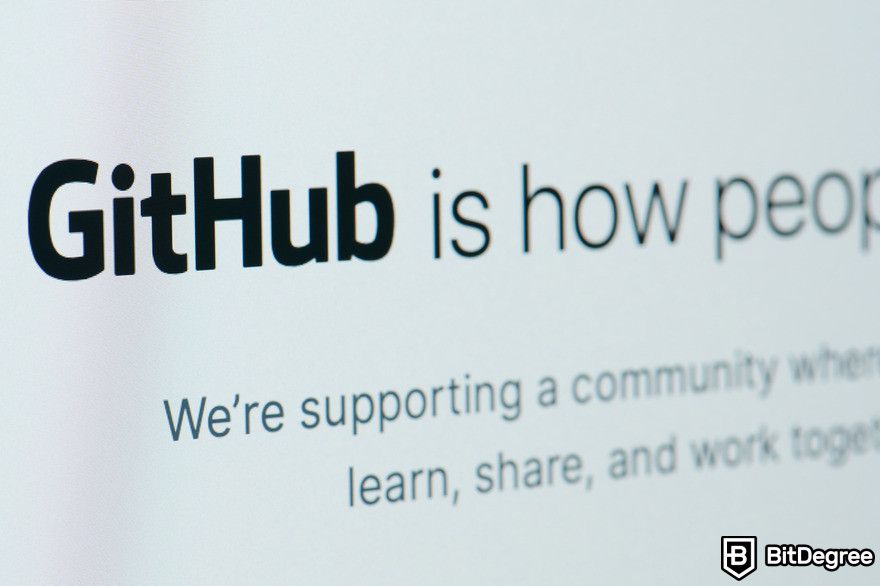
Don't overlook the official OpenAI forums and the ChatGPT support page. Here, you'll find official updates, bug fixes, and feature announcements directly from the source. It's also a place to raise your voice; feedback from users like you shapes the future of ChatGPT.
Learning from personal experience ties everything together. Each interaction with ChatGPT is a learning opportunity. Experiment with different prompts, note what works well and what doesn't, and share your discoveries with the community. Your unique issues and solutions could help others too.
Remember, every great invention starts with a curious mind and a question. The more you engage, experiment, and exchange ideas, the richer your ChatGPT experience will become. So, join these communities, ask questions, and share your stories.
ChatGPT's Limitations and Future Directions
While ChatGPT's advancements are noteworthy, it's essential to acknowledge its limitations, too. Let's talk about where it shines a little less brightly and what that means for users and developers[1] alike.
Accuracy Struggles, Content Generation Limits, and Tokens
ChatGPT tries to understand and generate human-like text, but sometimes it's a bit like an eager student who hasn't quite mastered the subject. It can misunderstand questions or offer answers that miss the mark. This is partly because language is complex, filled with nuances and meanings that can shift with context. ChatGPT does its best, but it doesn't always get it right.
Then there's the matter of creativity and content generation. Ask it to write a story or come up with a poem, and it will give it a go. Yet, the results might not always have the spark or originality you'd find in human-made art. It's constantly learning, but it hasn't quite captured the essence of creativity that comes so naturally to people.

Another technical hiccup comes in the form of token limits. Without getting too tangled in technicalities, think of tokens as pieces of information. ChatGPT can only handle so many at once. This can limit the length and depth of the conversations you have with it. It's like trying to have a chat with someone who can only hold so much in their memory at a time before they need to reset.
These limitations paint a picture of a technology that's groundbreaking yet still finding its footing. ChatGPT has opened doors and sparked imaginations worldwide, setting the stage for a future where AI might just understand the subtleties of human language a bit more clearly. This brings us back to the fundamental questions: "How does ChatGPT work, and why does it face such challenges?" For now, it remains a work in progress - a glimpse into what's possible as technology marches forward.
Ethical Usage, Privacy, and Security
You need to learn how to use ChatGPT at the same time walking carefully on moral grounds, especially when it comes to privacy, security, and responsible use. This means being mindful of the data shared and understanding the implications of its use.
When discussing privacy, it's critical to remember that ChatGPT learns from interactions. So, sharing sensitive or personal information during a chat could pose risks. Imagine talking to someone with a phenomenal memory; you'd choose your words carefully, right? That's a good rule of thumb when interacting with ChatGPT.
On the security front, while OpenAI has implemented robust measures to secure data, threats evolve constantly. Regularly updating security practices and being cautious of the information fed into ChatGPT can mitigate potential risks. Think of it as locking your doors in the neighborhood.
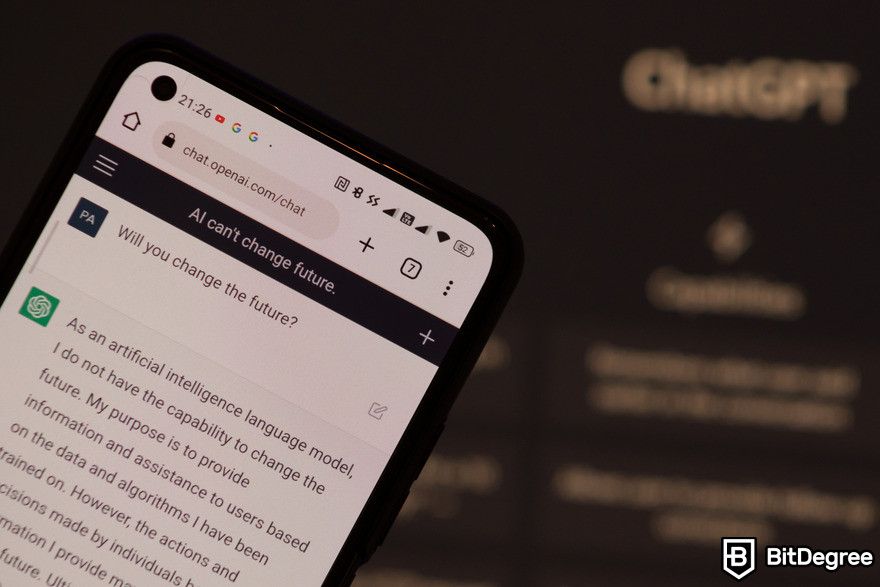
Responsible use of ChatGPT also means acknowledging its limitations. It's an AI, not a human, so its understanding and responses are based on the data it's trained on. Relying on it for critical decisions without human oversight can lead to unexpected outcomes. It's something like using a very advanced calculator; it helps with math but doesn't understand history problems.
Moreover, using ChatGPT to create misleading content, spread false information, or harm others contradicts the ethical guidelines set forth for AI use. It's akin to being given a powerful tool; using it to build and innovate can lead to growth, but misuse can cause damage.
In essence, the ethical use of ChatGPT revolves around respect for privacy, diligence in security, and commitment to responsible and constructive use. By adhering to these practices, you can explore the potential of ChatGPT while maintaining a safe, respectful, and ethical digital environment.
Innovative Uses of ChatGPT and Future Prospects
ChatGPT, the AI sensation, has been turning heads not just for what it can do now but for the limitless possibilities it promises for the future. It's delightful to see how creative minds have already started pushing boundaries, finding uses that hint at even more exciting times ahead[2].
In healthcare, they learned how to use ChatGPT to start conversations we never thought possible. Therapists are exploring its use as a preliminary tool for providing mental health support. It's not replacing human therapists, of course, but it offers a non-judgmental space for patients to express themselves freely, breaking down barriers to seeking help.
Creative industries are witnessing a renaissance with ChatGPT at their side. Musicians and writers are collaborating with AI to spark new ideas. There's a buzz about novels co-authored by ChatGPT and human writers, blending the creativity of the human mind with the AI's ability to process and generate text in novel ways.

Even more intriguing is GPT's role in environmental conservation. Researchers are experimenting with using it to analyze and predict climate patterns, potentially offering insights into combating climate change.
On the lighter side, ChatGPT is making strides in the culinary world. Fancy a recipe created by AI? ChatGPT is being used to craft unique recipes, sometimes combining ingredients in ways a human chef might not consider. It's adding a dash of unpredictability and excitement to cooking, making mealtime an adventure.
As we look to the future, it's clear ChatGPT is just revving up. Its current applications are impressive, no doubt, but they merely scratch the surface of its potential.

- Free to use
- Add-ons for Microsoft Word and Chrome
- Wide selection of tools
- Extensions for Chrome and Edge browsers
- Some tools are free
- Easy to use

- Supports over 120 voices in 20 languages
- Live customer support
- Voice cloning feature
- Voice cloning
- Emphasis and pauses
- Background music

- Easy to use
- AI-powered tools
- Cross-platform integration
- Multitrack editing
- AI-powered editing
- Accurate transcription
The Latest Updates on GPT. Peek into GPT-5?
Peering into the latest development updates on GPT models, particularly GPT-5, reveals a horizon filled with improvements and ambitious goals. With an industry focus on scaling models, GPT-5 promises to extend through a combination of increased parameter size, multimodal capabilities, and a step toward more personalized AI experiences.
- Parameter size and abilities: GPT-5 is anticipated to make a jump in parameters, aiming to surpass the benchmark set by GPT-4, which was reported at around 1.7 trillion parameters. Though specifics are under wraps, a 4-5x increase in parameters compared to GPT-4 could place GPT-5 among the most advanced models. This expansion is expected to not only improve the model's raw computing power but also improve the context window and up-to-date knowledge, potentially introducing real-time processing capabilities for certain types of information.
- Multimodality and user experience: With GPT-4 laying the groundwork for multimodal interactions through its support for speech and image functionalities, GPT-5 is poised to take a significant step forward. The introduction of video processing capabilities, coupled with improvements in accuracy, suggests a transformation in how users interact with AI, making it more natural. Innovations like the text-to-video generator Sora hinted at the ambitious multimodal direction OpenAI is taking, offering a glimpse into what might be possible with GPT-5.

- Personalization and customization: A noteworthy ambition for GPT-5 is to transcend its role as a chatbot to become a fully autonomous agent capable of executing tasks and making decisions based on user preferences and external data sources. This leap towards personalization is expected to incorporate a user's data, such as emails and calendars, into the model's operational framework, making AI interactions individualized and intuitive.
While we do not know the exact GPT-5 release date yet, it is speculated to be available in the summer. However, the developments surrounding it paint a picture of a future where AI is more intelligent and integrated into our daily lives. You might even need to re-learn how to use ChatGPT again.

Did you know?
Have you ever wondered which online learning platforms are the best for your career?
Conclusions
Wrapping up, ChatGPT has swiftly become a pivotal resource, from creative writing to coding to even educational support. Its rapid adoption, underscored by millions of users within months of launch, attests to its utility and the growing fascination with AI's capabilities.
On the flip side, ChatGPT has quirks. The accuracy of its responses can sometimes waver, and there are limits to the creativity and depth of content it can produce. The dialogue with ChatGPT can also hit a ceiling with token limitations, highlighting areas ripe for future improvements.
Ethically, navigating the use of ChatGPT involves a careful balance, especially concerning privacy and security. Users are urged to engage with mindfulness about the information shared and the potential implications of its use.
Looking ahead, future versions like GPT-5 signal a big step towards even more capable, personalized, and multimodal interactions. Improvements promise to elevate the AI experience, making it more integral to daily tasks and creative work.
In essence, ChatGPT is an indicator of the future of AI interaction, blending the capabilities of technology with the nuances of human communication. It is a clear example of the potential for AI to become an even more seamless part of our lives.
While waiting for new GPT to be released, embrace new technology with tools like Writesonic and Synthesia, learn useful knowledge from educational platforms: Udemy, Coursera, and Datacamp, and become an AI master.
The content published on this website is not aimed to give any kind of financial, investment, trading, or any other form of advice. BitDegree.org does not endorse or suggest you to buy or use any kind of AI tool. Before making financial investment decisions, do consult your financial advisor.
Scientific References
1. M. Alawida, S. Mejri, A. Mehmood, et.al.: "A Comprehensive Study of ChatGPT: Advancements, Limitations, and Ethical Considerations in Natural Language Processing and Cybersecurity";
2. S. S. Sohail, F. Farhat, Y. Himeur, et.al.: "Decoding ChatGPT: A Taxonomy of Existing Research, Current Challenges, and Possible Future Directions".
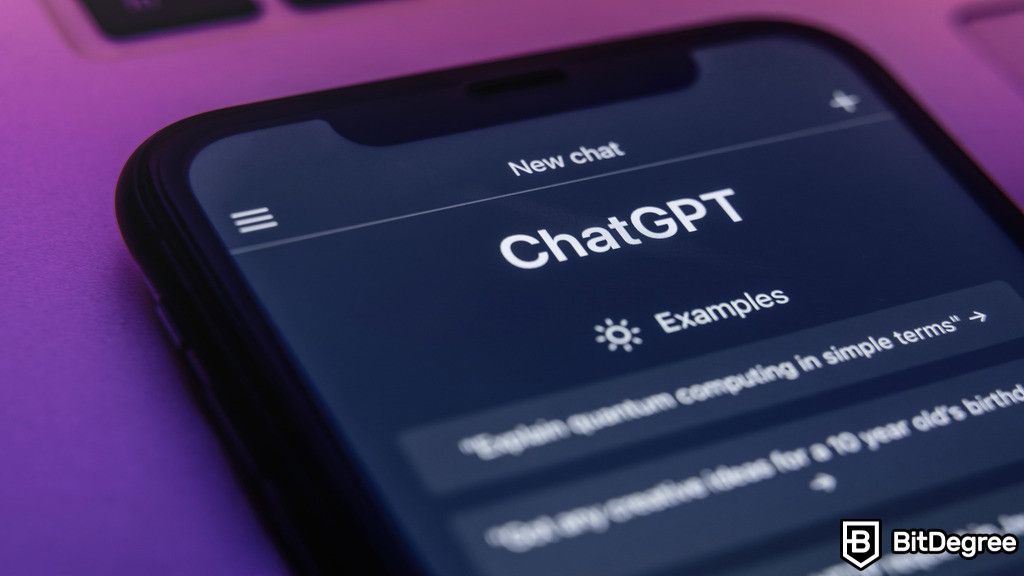
.jpg?tr=w-400)


